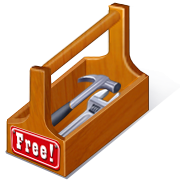 In a small business, the owner ends up wearing many hats to get the product or service delivered, the customers served, and the accounts settled. Within each functional area of a small business, there are even more hats. Although the accounting function might be considered one big hat, there are actually a number of skills that make up “the accounting department” in a small business. Here’s a list to help you understand how it all works together. As you read through it ask yourself how you are covering these functions in your workplace.
In a small business, the owner ends up wearing many hats to get the product or service delivered, the customers served, and the accounts settled. Within each functional area of a small business, there are even more hats. Although the accounting function might be considered one big hat, there are actually a number of skills that make up “the accounting department” in a small business. Here’s a list to help you understand how it all works together. As you read through it ask yourself how you are covering these functions in your workplace.
Data Entry Clerk
A data entry clerk typically knows how to do a few types of transactions that are routine. Perhaps this is posting timesheets from source documents, inventory transactions, or keying in transactions from one report or system to another. The data entry clerk usually has little or no knowledge of accounting or bookkeeping, and this person will need help when there are exceptions to the routine.
Bookkeeper
The main function of a bookkeeper is to post the transactions and reconcile the accounts of the business. This can include a number of functions and areas:
- Invoicing and receipts in the accounts receivable area
- Checks and bills in the accounts payable area
- Payroll
- Inventory
- Cash – bank reconciliations and necessary corrections and adjustments
- Account analysis
- Report preparation, but only to the extent that it rolls up the transactions
Good bookkeepers will know how to work seamlessly with the CPA who is doing the taxes for the small business so that the books are in compliance with regulatory requirements.
Controller
A controller brings in advanced skills beyond bookkeeping, including financial statement preparation and analysis, budgeting and planning, cost control, risk assessment, internal control, segregation of duties, and industry knowledge. A controller can bring valuable financial skills to a small business, and often do so by way of an outsourced part-time controller arrangement.
CFO (Chief Financial Officer)
The CFO is the highest level of accounting executive and is needed for complex strategies such as IPOs and financing for the larger company. A small firm might need CFO-level skills in high growth situations to manage cash flow, debt ratios, and financing options.
Technical Accountant or CPA
Typically, an accountant will have a 4-year degree or a CPA or both. In many states, the word “accountant” is reserved for CPAs. Accountants have both education and experience in a wide variety of specialties, including taxes, auditing, cost accounting, bank financing, financial statement preparation, and more.
Tax Preparer, CPA, or EA (Enrolled Agent)
Typically a tax preparer offers tax planning, preparation, and filing in any or all of these areas:
- Federal and state corporate, partnership, nonprofit, or individual tax preparation, filing, and planning
- Sales tax compliance and filing
- Franchise tax
- Payroll tax (although a good bookkeeper, controller, or accountant will know how to do this, too) and year-end requirements (W-2s and 1099s)
Management Advisory Consultant
One of the most overlooked roles an accountant can play in small business is in making process improvements in the way the staff and owner work in their business. Often a management advisory consultant can review how a process is being performed, such as invoicing, and make suggestions on how to speed the process, bill more frequently, or other opportunities that significantly improve the cash condition. The specialized skills of accounting, process knowledge, and software skills enable a management advisory consultant to save money for the business owner in many cases.
Accounting Software Consultant
An accounting software consultant has deep knowledge of one or more accounting software packages and can analyze the needs of the company to match them with the right accounting software.
Accounting Software Trainer
Just like any software package, and perhaps especially with accounting software, it’s not a good idea to guess how to use the software. A software trainer will have in-depth knowledge of the tips and tricks inside the package that will save your bookkeeper (or you) time and money.
Adding Up the Value
The more of these roles you have covered in your business, the more your business will benefit. If you have gaps, it’s likely you’re feeling the missing skillset and having issues around that area.
If we can help you fill any of these gaps, please let us know. We’re at your service.
 Running a business is filled with regulations everywhere you turn. These can drain precious time away from the core of your business, but if you ignore them, there could be huge financial consequences you may be risking without even realizing it. The best way to handle them is to understand your exposure, consult with any experts you need to bring in, create a checklist, and make sure you’re in compliance.
Running a business is filled with regulations everywhere you turn. These can drain precious time away from the core of your business, but if you ignore them, there could be huge financial consequences you may be risking without even realizing it. The best way to handle them is to understand your exposure, consult with any experts you need to bring in, create a checklist, and make sure you’re in compliance. We know we’ll never make tax season your favorite time of year, but perhaps we can make it easier. Here are five things you can do now to smooth out the time required to pull your records together for your tax preparer.
We know we’ll never make tax season your favorite time of year, but perhaps we can make it easier. Here are five things you can do now to smooth out the time required to pull your records together for your tax preparer. According to the Association of Certified Fraud Examiners (ACFE), over $3.5 trillion is projected to be lost to fraud worldwide in 2011 alone. The typical organization loses 5 percent of its revenues each year. While we have a lot to think about as entrepreneurs, we do need to take time to educate ourselves about this unfortunately common business loss.
According to the Association of Certified Fraud Examiners (ACFE), over $3.5 trillion is projected to be lost to fraud worldwide in 2011 alone. The typical organization loses 5 percent of its revenues each year. While we have a lot to think about as entrepreneurs, we do need to take time to educate ourselves about this unfortunately common business loss. If you have an endless to-do list, you’re not alone these days. Most of us are constantly looking for ways to work smarter and get more done. Here are six quick tips to help your productivity so you can go home early.
If you have an endless to-do list, you’re not alone these days. Most of us are constantly looking for ways to work smarter and get more done. Here are six quick tips to help your productivity so you can go home early. If you’re looking for ways to boost your productivity, technology is a great place to start. The good news is there are many free options available. Here are five favorites you might not know about.
If you’re looking for ways to boost your productivity, technology is a great place to start. The good news is there are many free options available. Here are five favorites you might not know about. When was the last time you praised your employees or contractors? Hopefully, you’ve developed the good habit of frequently praising your team members, and if you haven’t, you’re certainly not alone. Most of us do not get enough praise, so there’s a strong likelihood there’s room for improvement when it comes to recognition of a job well done in just about every workplace. Here are some tips to praise more and help your workers flourish.
When was the last time you praised your employees or contractors? Hopefully, you’ve developed the good habit of frequently praising your team members, and if you haven’t, you’re certainly not alone. Most of us do not get enough praise, so there’s a strong likelihood there’s room for improvement when it comes to recognition of a job well done in just about every workplace. Here are some tips to praise more and help your workers flourish. One of the main reasons clients leave is because they feel ignored. The cost of ignoring clients is high; you have to do more marketing and replace those clients when they leave. The antidote to this is easy: just stay in touch more with clients, and let them know you care about them and their business. Here are seven ways to stay in touch with all your clients and especially your long-term customers.
One of the main reasons clients leave is because they feel ignored. The cost of ignoring clients is high; you have to do more marketing and replace those clients when they leave. The antidote to this is easy: just stay in touch more with clients, and let them know you care about them and their business. Here are seven ways to stay in touch with all your clients and especially your long-term customers. As a business owner, you have likely acquired many skills and are wearing many hats in your business. Although admirable, your versatility can often lead to slower growth for your company. This happens when you become the bottleneck. Here are five places to check to make sure you haven’t become the bottleneck in your own business.
As a business owner, you have likely acquired many skills and are wearing many hats in your business. Although admirable, your versatility can often lead to slower growth for your company. This happens when you become the bottleneck. Here are five places to check to make sure you haven’t become the bottleneck in your own business. Just about everyone suffers from a lack of time to do all the things they want, or even need, to do in their business. One of the solutions to freeing up your time is to delegate. The question is, what are the most effective tasks to delegate? Here are ten ideas for you to consider (or reconsider) to free up your valuable time for more important things.
Just about everyone suffers from a lack of time to do all the things they want, or even need, to do in their business. One of the solutions to freeing up your time is to delegate. The question is, what are the most effective tasks to delegate? Here are ten ideas for you to consider (or reconsider) to free up your valuable time for more important things.

.jpg)



